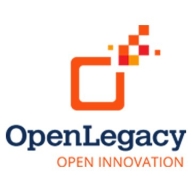

Amazon API Gateway and OpenLegacy are competing products in API management and integration. Amazon API Gateway has the upper hand in environments using AWS services due to its seamless integration and cloud-native attributes, whereas OpenLegacy is preferred for modernizing legacy systems with robust support.
Features: Amazon API Gateway offers seamless integration with AWS services, exceptional scalability, and advanced security capabilities. OpenLegacy efficiently exposes and modernizes legacy systems, provides flexibility integrating with diverse back-end systems, and effectively reduces the complexity of adapting to legacy architectures.
Room for Improvement: Amazon API Gateway could enhance support for non-AWS environments, improve monitoring tools, and offer more flexible pricing options. OpenLegacy may benefit from optimizing its documentation, strengthening security features for cloud environments, and expanding support for different legacy systems to cover a wider range of technologies.
Ease of Deployment and Customer Service: Amazon API Gateway, being cloud-based, supports streamlined deployment processes with comprehensive AWS integration and documentation. OpenLegacy offers flexible deployment with on-premise and cloud options, prioritizing tailored support for complex legacy integrations and providing practical solutions for hybrid environments.
Pricing and ROI: Amazon API Gateway's pay-as-you-go pricing model supports cost predictability for scalable AWS environments, offering significant ROI for cloud-native applications. OpenLegacy involves higher initial setup costs due to its tailored solutions but yields high ROI in legacy modernization projects, making it invaluable for transforming outdated systems.

Amazon API Gateway facilitates internal APIs exposure to external users, manages requests, and enhances security with authentication. It efficiently handles serverless architectures with AWS Lambda integration, supporting cloud-based API management.
Amazon API Gateway acts as a gateway for backend microservices, making it suitable for real-time use cases. It enables secure communication, traffic routing, and access control management. With its strength in integrating AWS services, it offers excellent scalability, proxy capabilities, and cost-effective management. Users have noted areas for improvement, such as pricing, interface, and the need for better AI-based capabilities. Improvements are also sought in monitoring, security features, and support services.
What features make Amazon API Gateway stand out?Industries utilize Amazon API Gateway to streamline operations in sectors like finance, healthcare, and tech, focusing on real-time data processing and secure communication. The gateway's ability to manage traffic and provide robust security features is key in industries requiring dependable and versatile API management solutions.
OpenLegacy helps organizations quickly launch innovative digital services by extending their core back-end systems to the web, mobile and cloud in days or weeks versus months. Our microservice-enabled API integration and management software quickly reduces project backlog by automating and accelerating microservices and API creation, deployment, testing and management from core applications, mainframes and databases. Together, business and IT teams can quickly, easily and securely meet consumer, partner or employee demands for digital services without modernizing or replacing core systems, and without special programming skills or invasive changes to existing systems and architectures. OpenLegacy is designed for ongoing management of microservices APIs and is based on open standards, so our software plays nice with your current technology stack and supports agile, DevOps and continuous development. Learn why leading companies choose OpenLegacy at www.openlegacy.com.
We monitor all API Management reviews to prevent fraudulent reviews and keep review quality high. We do not post reviews by company employees or direct competitors. We validate each review for authenticity via cross-reference with LinkedIn, and personal follow-up with the reviewer when necessary.